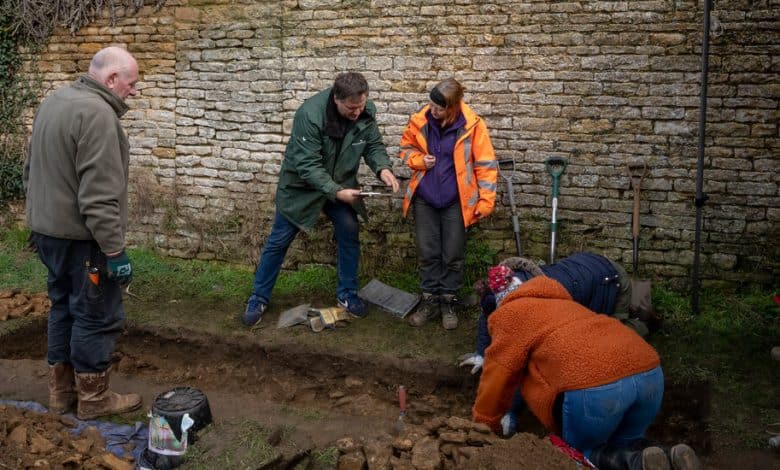Amateur Historians Heard Tales of a Lost Tudor Palace. Then, They Dug It Up.

For generations, residents of Collyweston — a village in central England snuggled up against the River Welland — passed down stories of a grand Tudor palace, of royal processions through the valley below, of the mother of a king who had called it home.
Over hundreds of years, the stories persisted, even as memory of the palace’s whereabouts faded. But the lore suddenly came to life when a handful of amateur historians unearthed portions of the long-lost palace, buried under a few feet of soil. Historians from the University of York have verified their findings.
“We are a small village with a small group of enthusiasts, and what we’ve basically achieved here is nothing short of a miracle,” said Chris Close, 49, the chairman of the Collyweston Historical and Preservation Society. “You know, it’s not every day you get to dig up a part of your country’s past.”
Mr. Close, soft-spoken and warm with a dimpled smile, was raised in Collyweston, with family roots that go back 400 years here. He remembers hearing stories of the palace as a young boy. It belonged to Lady Margaret Beaufort, who played a major role in the Wars of the Roses, a series of civil wars for the English throne. She acquired it in 1487, two years after her son was crowned king as Henry VII. He, his son Henry VIII, and Elizabeth I all walked the palace halls.
After the Tudor era, which ended in 1603, the palace fell into disrepair. Its contents were sold, portions knocked down or repurposed, and new buildings went up. The palace slowly faded into history, disappearing into the dirt. Almost.